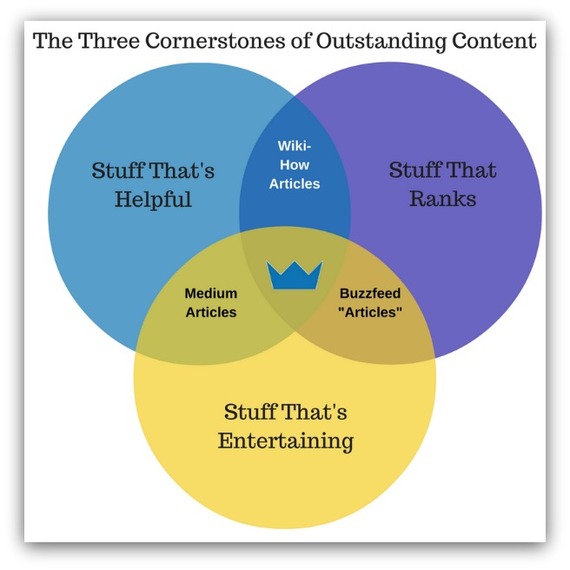What do you want from your content?
Pardon the italics. I'm not commenting under my breath like someone at a presidential debate. I'm just curious, because the answer differs from person to person:
"I definitely want more shares from my content. More shares = more potential readers = more potential customers."
"My number one goal in content is to get more engagement. More views, more comments, the whole thing."
"Forget about shares and all that. I just want a bigger email list."
Any of those sound like you? Of course they do. They're the most common answers to that question. You want your content to get shared, viewed, and acted on.
But for all those great results, there's one flaw with these answers...
They all focus on the outcome.
And focusing on the outcome - or what you hope to achieve with your content - is the problem with current content. It's like being a baseball player, stepping up to the plate saying "Time to get a hit."
You can't control that outcome. You're looking at the result, but the result doesn't just magically appear.
What you can control is your approach. Your swing. The pitch you choose to hit.
Those are elements of the process, and they're within your control. Mastering the process leads to a hit. When you execute on the small things that lead to success, the results (or outcome) will follow.
Tim Ferriss can vouch for that. A few years ago he wrote about a terrifying experience where some medical practitioners basically almost killed him and his friend.
Why? Because they didn't have a process. They just knew they wanted to cure him and all their actions drove towards that outcome. So they blindly kept trying things without establishing a process.
As he wrote in that same blog post:
"Atul Gawande is an outstanding surgeon, Associate Professor of Surgery at Harvard Medical School, and author of "The Checklist Manifesto," which details the power of checklists to prevent catastrophes or simply improve outcomes.
From the prevention of airplane crashes to decreases in hospital-based bacterial infections, having a clear, repeatable process is key."
He argues that by following checklists (or processes), you stay more consistent and frequently get the outcome you want. But because the doctors that "treated" him didn't have a process, they ended up doing way more harm than good by chasing a positive outcome.
Content is the same. Saying you want more customers, traffic, and shares won't get you more of those things. You don't control the outcome.
You control the process.
The process is how you build your content. The elements you include. The tone you inflect. The little things that, when added up, will get you the outcome you want.
And when it comes to process, there are three cornerstones you control that make your content great.
The three cornerstones break down like this:
Stuff That's Helpful: Your content helps the reader accomplish something.
Stuff That's Entertaining: Your content is engaging and holds interest.
Stuff That Ranks: Your content appears on search engines.
Executing on any one of these cornerstones will give you good content. And the best part is, each of these cornerstones are processes in themselves. There's a much clearer path to creating any of these cornerstones than "getting more shares."
But look what happens when you combine the cornerstones:
Helpful + Ranking = WikiHow articles (easily accessible articles that help you accomplish something)
Helpful + Entertaining = Medium articles (fun articles that help you learn/gain insight)
Ranking + Entertaining = Buzzfeed articles (easily accessible articles that are fun to read)
Those three combinations result in content that create successful media companies. Buzzfeed could say, "Let's get 1,000,000 page views." Instead, they executed on their process -- creating entertaining content that ranks. The result was a positive outcome.
And when you combine all three cornerstones? That's when you get transcendent content that becomes synonymous with your site. That stuff grows your email list, brings in thousands of shares and consistently brings traffic to your site.
But all that happens when you focus on your process. Remember the words of C.S. Lewis:
"It may be hard for an egg to turn into a bird: it would be a jolly sight harder for it to learn to fly while remaining an egg."
It's an impossible task to create your content for more shares, opt-ins etc. When you take the time to set up a process (creating for the three content cornerstones), it makes it far easier for your content to fly.

